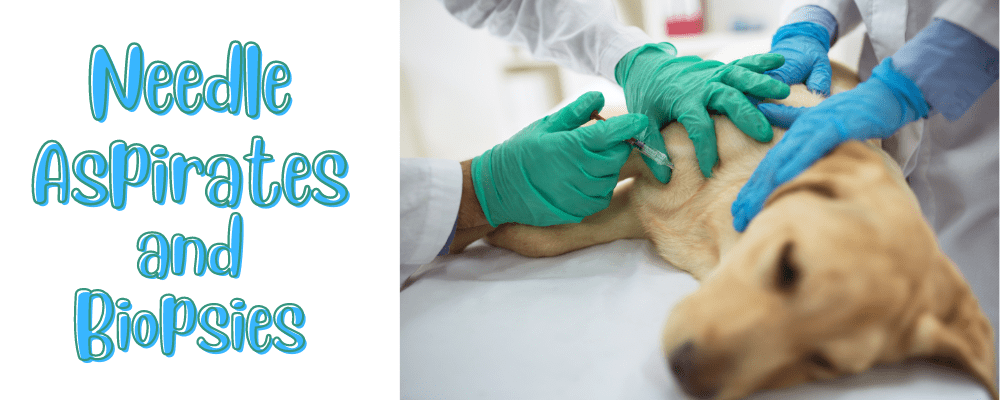If you found a suspicious lump on your dog, your veterinarian is most likely recommending a fine needle aspirate (FNA). There is great diagnostic value in cytology of needle aspirates and biopsies. You may be wondering what a fine needle aspiration is and what exactly it entails.
If your dog has a lump that needs to be checked out, it’s always good to be prepared in advance so you know what questions to ask your vet and so you can make the most appropriate decisions which are often needed to be made on the spot. In most cases, a fine needle aspirate is a very important procedure that will help your vet determine if that lump is something to worry about or not.
The truth is, in most cases, your vet cannot tell from visual inspection alone if a lump, bump, or mole is benign or malignant. It’s always best to play it safe and rule out cancerous growths, especially since there are certain forms of cancer that are known for being great imitators, meaning that they look like innocent and benign growths when they are not.
What does a FNA entail?
A fine needle aspirate is a procedure that requires the insertion of a sterile, hollow, small-gauge needle (fine needle) into the suspicious mass.
The dog’s hair may be clipped prior to the procedure and the skin area will be disinfected.
Once the needle is inserted, the plunger of the syringe is drawn back, and cells or fluids are collected (aspirated) in the attached empty syringe. Several areas of the mass may be aspirated.
The collected cells or fluids are then placed on a glass slide and stained so they can be evaluated by the veterinarian by using a microscope (cytology is the term used when studying cells) or they can be sent to a pathologist for evaluation. When done in-house (in the vet’s office), test results may be attained within minutes. When sent out to a lab, it may take anywhere between three and five days.
While skin lumps and bumps are most frequently evaluated through fine needle aspiration, this procedure may also be utilized to collect cells from internal organs like the liver, lung, kidneys, or lymph nodes. In some cases, fluids may also be collected. For instance, a fine needle aspirate of the bladder may collect urine (a procedure known as cystocentesis), or synovial fluid may be collected from the joints. Fluid may also be collected from the chest or abdomen in the case of dog ascites.
The fluid collected may reveal the type of cells, fungi, or even parasites present in the mass or abnormal organ. Often, fine needle aspirates are successful in correctly diagnosing the following benign or malignant tumors:
- lymphosarcoma/lymphoma
- mast cell tumors
- histiocytomas
- lipomas
- sebaceous cysts
In most cases of fine needle aspiration of a lump, the pain is minimal and consists of only the sensation of the needle piercing the skin. Sedation or anesthesia is generally not required. However, fractious pets may benefit from a light sedative if they tend to move too much and are uncooperative.
In some cases, things can be a bit more complicated. For instance, in the case of internal organs, the fine needle aspirate is done during an ultrasound, or in the case of lumps in the mouth, heavy sedation or anesthesia may be needed for a fine needle aspiration, which is why many vets prefer to directly perform a surgical biopsy.
Biopsies
If the small sample of cells is not enough to provide a firm diagnosis, a biopsy may be recommended. Biopsies are typically done under heavy sedation or general anesthesia. A small piece of the mass is removed and sent to a pathologist. In some cases the surgeon will attempt to remove the entire mass and then submit a biopsy to see if any further treatment needs to be done. At the lab, the pathologist will slice the tissue into very thin layers then place them on a slide and stain them for evaluation. Cancer cells have certain characteristics that allow the pathologist to determine the tissue of origin, whether or not it contains cancer cells, and often they can tell how severe the cancer is.
If your pet has any suspicious lumps, make an appointment to have them evaluated while they are small and easier to deal with.
